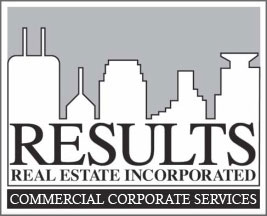CORPORATE RELOCATION AND COMMERCIAL SPACE ACQUISITION PROCESS
There are distinctive steps to a corporate relocation or acquisition, many of which are far more critical and time-consuming than the transaction or physical move itself.

The following outline provides a thumbnail description of these steps:
- ESTABLISH RELOCATION CRITERIA. This is a joint effort between the company, its broker, and possibly a space planner to answer basic questions.This important step alone can take from two weeks to two months.
- MARKET ANALYSIS. In this step the broker produces a list of all facilities that meet established relocation or acquisition criteria.
- CLIENT REVIEW OF ALTERNATIVES. It can take from one to several weeks to distill the list of potential buildings that most closely match specifications.
- BROKER/CLIENT BUILDING INSPECTION. This is a physical inspection of alternative locations selected by the company after reviewing the list of available facilities.
- ANALYSIS OF VIABLE ALTERNATIVES.This is a screening by the companyand broker, reviewing and discussing each building being considred.Assuming that one of the buildings matches the criteria, the next two stages (6and 7) can be undertaken simultaneously:
- PRELIMINARY SPACE PLANNING AND/OR RENOVATION EVALUATION.The space planner, construction expert and user determine the exact improvements and modifications that best fit the property to the user’s needs.
- WORK LETTER AND RENOVATION EVALUATION. The work letter explicitly defines the building’s standards and how closely they conform to thecompany’s space design, build out needs, or improvement allowances. The renovation evaluation determines the exact construction costs required for renovation of a facility. Both are needed before negotiations are finalized as these are the most critical costs of any transaction.
- SUBMISSION OF PROPOSAL OR OFFER. This is, in effect, a “bid” submitted either by the company to the client or vice-verse, through the broker, based on all specifications and criteria presented for each building being considered. This will generally take two to three more weeks.
- BROKER/CLIENT REVIEW OF PROPOSAL. Broker furnishes client with acomparable value analysis of all proposals. This allows the client to scrutinize cash requirements and total cost projections, including present value and the impact of different escalation clauses. It brings the financial impact into very clear focus and significantly aids the final decision.
- DEVELOPMENT OF NEGOTIATING STRATEGY AND COUNTERPROPOSAL/COUNTER OFFER.This is a crucial step. This is where the company maneuvers to get the best deal possible.
- PRELIMINARY NEGOTIATIONS.This is the time period for negotiation between the client and building owner, through the broker, to determine the terms of the contract and significant business points.
- CONTRACT PREPARATION. Plan on at least two weeks for the broker and attorneys to draft the document that conveys the negotiated economic terms.
- CONTRACT NEGOTIATIONS. The economic and legal considerations are negotiated by parties involved through the broker. Individual clauses are developed to address the specific points and concerns of the parties involved.These clauses can be user sensitive, owner sensitive or lender sensitive dependent on the particular issue involved. Your brokerage team will maximizeyour interests during these negotiations to save you time and money. You can operate your business with the confidence that there will be no unpleasant surprises created by the terms of the contract.
- REFINEMENT OF FINAL DOCUMENT. The contract is rarely letter perfect,and the client and broker will often take a week or longer reviewing the document, with the recommended aid of client’s legal counsel.
- DOCUMENT EXECUTION AND DELIVERY. The company, its attorneys and the building owner hammer the document into its final shape.
- CONSTRUCTION DRAWINGS AND BUILDING PERMITS. It is common to start preparing construction drawings and obtaining building permits at about the same time that contract preparation gets underway.
- CONSTRUCTION.Figure on three weeks to three months for construction to meet your company’s plans. (A longer time frame is required for a build-to-suit facility).
- CLIENT OCCUPANCY. The final step of the timetable is the actual move or occupancy of the new facility.
Contact Form
Please fill out form below to have one of our representatives contact you. Fields marked (*) are required


